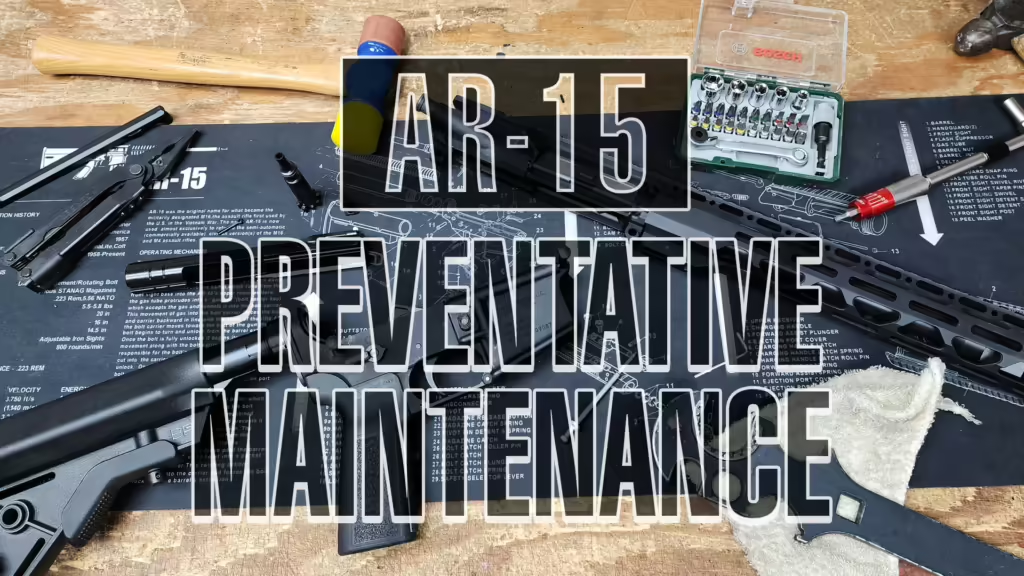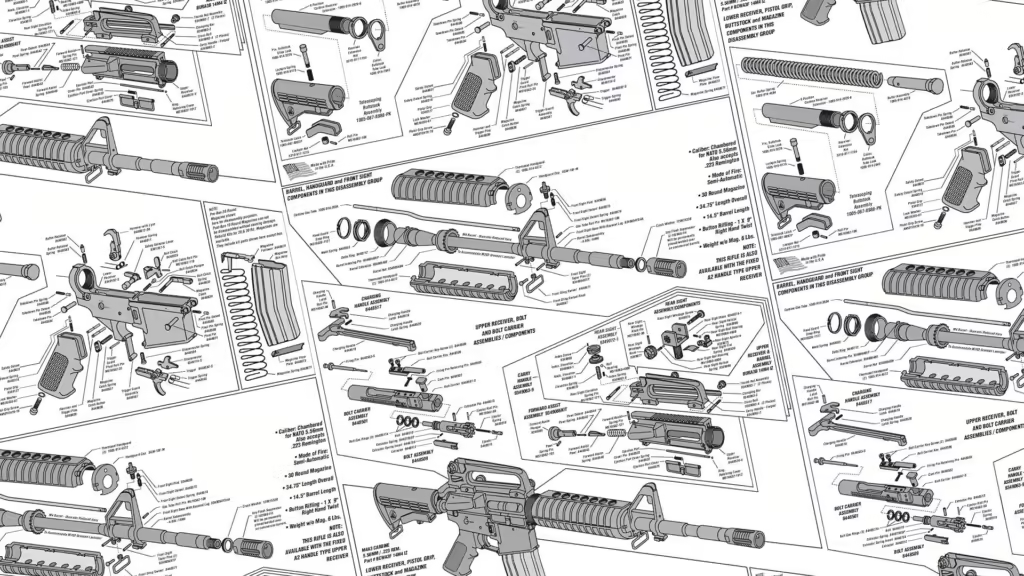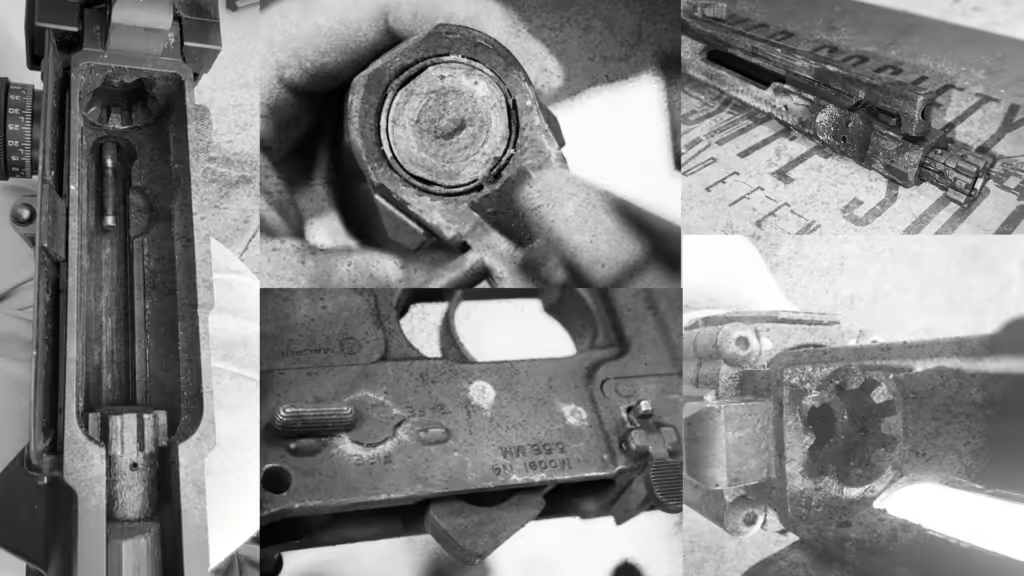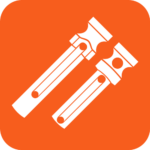
This is your complete AR15 Preventative Maintenance Overview. The AR15 is revered for its versatility, reliability, and performance. Whether used by military personnel, law enforcement, or civilians, this rifle has earned a reputation as a dependable tool. However, even the most durable firearms require routine preventative maintenance to ensure they function correctly, especially in critical moments. Neglecting basic care can lead to malfunctions, decreased accuracy, or even total failure at the worst possible time.
In this comprehensive guide, we’ll walk through essential AR15 preventative maintenance steps, so your rifle remains reliable when you need it most. From visual inspections to cleaning tips, these practices are crucial to maintaining optimal performance and safety.

Why Preventative Maintenance Matters for Your AR15
Preventative maintenance is more than just a routine; it’s an investment in your AR15’s longevity and reliability. Over time, any firearm experiences wear and tear from environmental exposure, regular use, and even from sitting in storage. The AR15 is no different. Its complex design, with multiple moving parts, makes it vulnerable to small issues that could snowball into major problems if not addressed early.
Imagine you’re at the range or, worse, in a defensive situation, and your AR15 fails to fire because of a loose bolt or carbon buildup. Regular maintenance prevents these kinds of failures, ensuring your rifle operates smoothly when it matters.
AR15 Preventative Maintenance Basics
To maintain peak performance, AR15 owners should familiarize themselves with the essential components of the rifle and perform regular checks. Here are nine key areas that require attention:

1. Exterior Inspection: Spotting Damage Before It Becomes a Problem
Before diving into the specifics of internal parts, start with a thorough visual inspection of the rifle’s exterior. It’s essential to verify that everything is intact and free from damage.
- Barrel: Examine the barrel for any visible signs of damage such as dents, nicks, corrosion, or pitting. Small imperfections can impact accuracy and reliability.
- Handguard: Ensure the handguard is securely attached and not showing signs of cracks or warping.
- Stock and Grip: Look for wear, cracks, or looseness in the stock and grip. Tighten any loose parts.
- Sling Attachments: If you use a sling, verify that the mounts are secure and free of rust. Ensure no dirt or debris interferes with their functionality.
Addressing exterior damage early prevents more significant problems down the line and ensures your AR15 remains reliable.
2. The Heart of the AR15: Bolt Carrier Group (BCG) Maintenance
The bolt carrier group (BCG) is the heart of your AR15, responsible for the cycling process that makes your rifle fire reliably. Regular inspection and maintenance are essential.
- Bolt: Inspect the bolt for cracks or chips, especially on the lugs, as a broken lug can cause catastrophic malfunctions.
- Extractor: Check the extractor spring’s strength and ensure the extractor claw is sharp enough to grip and eject spent cases efficiently.
- Gas Rings: A simple test can assess the gas rings’ condition—stand the BCG on its bolt face. If it collapses under its own weight, replace the gas rings.
- Firing Pin: Inspect the firing pin for wear or deformation. A damaged pin can lead to unreliable ignition, which could prevent your rifle from firing.
By keeping the BCG clean and well-lubricated, you significantly reduce the risk of failures to eject or feed rounds during operation.

3. Charging Handle Inspection: Small, Yet Critical
Although it may seem insignificant, the charging handle plays a vital role in the AR15’s operation. A malfunctioning charging handle can render your rifle useless.
- Bending: Ensure the charging handle is straight and not bent or twisted, as this could affect smooth cycling.
- Latch Operation: Check that the latch and spring operate smoothly. A worn or loose latch could cause problems with engaging the upper receiver during operation.
4. Inspecting the Lower Receiver: Key Components for Smooth Operation
The lower receiver houses critical parts like the trigger group, hammer, and magazine well. Regular inspection of these areas is crucial for a well-functioning AR15.
- Trigger Mechanism: Ensure the trigger moves freely, and the reset feels crisp. Any grittiness or sluggishness could signal a need for cleaning or replacement of parts.
- Magazine Well: Inspect for wear or burrs in the magazine well. Ensure magazines seat securely and release properly.
- Buffer and Buffer Spring: A worn buffer spring can cause cycling issues, and a damaged buffer can negatively affect recoil management. Replace springs measuring less than 10” in length.
5. Checking the Gas System for Optimal Performance
The AR15 relies on a direct impingement gas system, which can be prone to fouling if not maintained. Regular inspection ensures the system works as intended.
- Gas Block: Ensure the gas block is not loose or leaking gas, as this can cause under-gassing, leading to malfunctions.
- Gas Tube: Check for debris or carbon buildup in the gas tube, as blockages can disrupt the cycling process.
6. Barrel and Muzzle Device: Accuracy and Safety in Focus
A clean and undamaged barrel is key to both accuracy and safety.
- Barrel: Use a bore light to check for fouling, corrosion, or damage inside the barrel. Consistent accuracy requires a clean and smooth bore.
- Muzzle Device: Inspect your flash hider or muzzle brake to ensure it is securely attached and not damaged. A loose or damaged muzzle device could affect recoil and accuracy.
7. Optic and Sight Maintenance: Hitting the Target Every Time
Properly maintained sights and optics are essential for aiming accuracy.
- Iron Sights: Ensure iron sights are tightly secured and free from damage or excessive play.
- Optics: If you use optics, verify that they are securely mounted, and the glass is clear of scratches or cracks. Tighten any loose screws to avoid misalignment.
8. The Importance of Cleaning and Lubrication
Cleaning and lubrication are the backbone of firearm maintenance. A well-maintained AR15 operates more reliably and lasts longer.
- Cleaning: Use a high-quality cleaning kit to remove carbon buildup from the barrel, chamber, BCG, and gas system. These components are prone to fouling and require regular attention.
- Lubrication: Lightly lubricate moving parts, including the bolt, cam pin, charging handle, and trigger group. Avoid over-lubricating, as this can attract dirt and carbon, leading to additional fouling.
9. Test Firing: The Final Step in AR15 Preventative Maintenance
After performing a full maintenance check, a test fire is essential to verify that everything is functioning as it should. Load a magazine and fire a few rounds at the range, noting any malfunctions, such as failures to feed or eject. This step ensures your AR15 is range-ready and performs reliably in real-world conditions.
Conclusion: AR15 Preventative Maintenance Overview
Preventative maintenance is a small investment that pays off by keeping your AR15 functioning at peak performance. Regular checks of critical components, from the BCG to the gas system, ensure that your rifle will operate reliably in any situation. By following this routine, you’ll extend the life of your AR15 and avoid issues that could compromise its functionality.
Remember, firearms maintenance is not just about preserving performance—it’s about safety. Whether you’re on the range or relying on your rifle for defense, a well-maintained AR15 will be your most trusted companion.
Thank you for reading our AR15 Preventative Maintenance Overview!






